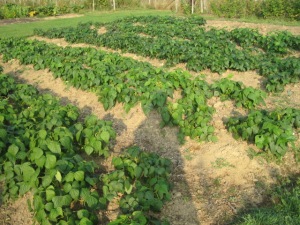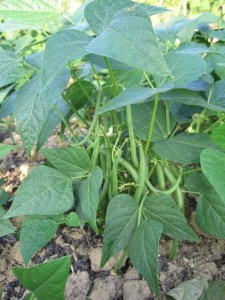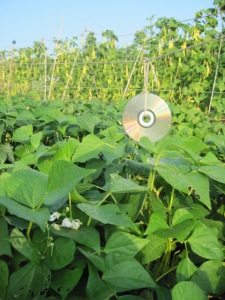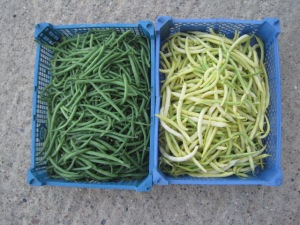September has arrived, although it hardly feels like it as we approach the end of another gloriously sunny week in the vegetable garden. The beautiful weather this summer seems to have done the crops on our plot the world of good and we… the gardeners and the volunteers, have had a job to keep on top of the produce which is growing so plentifully. The season started well with an abundance of soft fruit including raspberries, strawberries and mixed hybrid berries. Our lettuces were quick to follow and we were soon to be harvesting beautiful fresh lettuce for the restaurant on a daily basis. Soon after this we were blessed with a glut of peas, swiftly followed by French beans, runner beans, kohl rabi and courgettes, to name but a few. Our red cabbages are finally hearting up as well, and we have started harvesting our first few of these. Some of our garlic and onions were lifted in early August and have been drying out in our barn, ready to be stored.
At the moment the most plentiful crop is our French beans. We have grown three varieties of dwarf French bean this year: ‘Hildora’, ‘Valdor’ and ‘Safari’. One of these varieties is the traditional green bean, and two are yellow varieties which hold their colour well even when cooked. We sowed our bean seeds in trays back in early May and they were ready to plant out in late June. It was a really hot week when we planted the beans out on site and it looked like they might struggle with the heat and lack of water. Moisture around the roots of French beans is essential to ensure maximum pod development and a long harvesting period. However, following a bit of ‘TLC’ and some much needed watering during their first days in the ground (and regularly throughout the summer) they really picked up and now they are producing incredibly well.
There are three main types of pests that we have had to look out for during the growing and cropping season of our French beans. The first of which is slugs and snails which can devastate crops of healthy young plants, and here in the vegetable garden we cannot afford to risk losing a crop to these slimy garden invaders. To stop them in their tracks and keep them away from our vegetables we have tried many of the traditional methods of organic slug prevention: from ‘slug pubs’ to crushed up eggshells around the plants. However, we find the most effective solution is to use organic slug pellets which are not toxic to other wildlife and that break down into iron and phosphates, which are naturally occurring minerals in the soil.
The second pest which threatens any French bean crop is black bean aphid. Once established, these can grow into large colonies which may stunt growth and damage flowers and pods. The best way to stop these insects from damaging your beans is to keep a close eye out for them when they arrive and squash any before they can grow in numbers.
The final pest which commonly causes problems when growing beans is birds. Birds can totally strip young plants of their foliage, and often uproot a plant when pecking a little too enthusiastically! On our vegetable plot at Sissinghurst we have strung up old CDs above the bean crop as they catch the light and this spooks the birds and deters them. You could also put up netting over your beans but this can be a hassle to remove and replace each time you want to harvest any!
All our produce is picked with the restaurant in mind, with most crops being picked and delivered fresh to the kitchen within a couple of hours. However, due to the astonishing success of some of the varieties this year, we have produced quantities that even the restaurant at Sissinghurst cannot use! Luckily, the on-site shop has been great at selling our produce for us when we have excessive quantities. In addition our fortnightly farmers’ market, which is held on the Plain, is an excellent way for us to make our produce available to staff and visitors alike.
Why not come along and pick up your own bag to enjoy at home?
Helen Silver (Assistant Vegetable Gardener)



